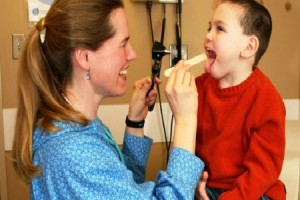There are shortages of health care workers in rural America, and while some look to nurse practitioners to fill those roles, in the very cities that have an abundance of physicians there are shortages of nurses in the hospitals.
He was a vice president of a major construction firm and was in rural Arizona visiting some retired friends when he felt the crushing chest pain. He told his wife, who promptly gave him two aspirin and dialed 911. He went to the Yuma Regional Hospital where they had the ability to do a cardiac catheterization, but not to do an angioplasty. But in two hours he was in the center at Banner Good Samaritan hospital – going from helicopter to catheterization laboratory in seconds (they had two hours to arrange the staff and cardiologist to be there). But the damage had been done. He went from being an active senior adult to a cardiac cripple. He spent the remainder of his days in a rehab center, and shortly after he left he died of heart failure in his home.
This is rural America, where if you have a heart attack you may or may not get the care depending on who is in the hospital. A nurse practioner may be able to give you some medication to try to make things better but they will not be able to do an advanced cardiac procedure.
Yet get to the hospital in the city you may find that the nurse to patient ratio is eight to one –instead of four to one. You may have the finest hospital in the world, based on the specialists, but if the nursing ratio goes from one nurse to eight patients you will have a 30 per cent increase in mortality of surgery patients.
Most nurse practitioners do not work on their own, however, most are employed in physician offices to act as extenders of healthcare. The most innovative model is in Southcentral Foundation’s Nuka system of a care, where a family practitioner is surrounded by a team that includes a nurse case manager, behavioral health specialist, medical assistant, dietician, and an administrative assistant. This team can also be headed by a nurse practitioner. This provides a comprehensive health care model that has led the world in innovation, decreased health care costs, and access to the provider. And yet, the best practice allows only 14 patients a day , same day access to primary care, and improved satisfaction. This allows total integration of care for the patient and their family.
Alaska is the definition of rural, the last frontier. Where many communities can only be accessed by bush pilot or boats, and winter weather can mean inability to get in or out of the community for days. The famous Iditarod dogsled race was a result of getting diphtheria vaccine to Nome via dogsled (many saw the movie of the lead sled dog, Balto by Walt Disney).
 Alaska Natives had complete coverage of healthcare by the Indian Health Service, and yet they had the worst outcomes in the world. A culture of wait in the ER for a doctor, stay in the hospital for days, and make an appointment weeks out for your physician. But that changed, and it changed because the local Alaska Natives took control, and modeled their healthcare system after the relationships that Alaska Natives build with one another. You think building relationships is easy – it isn’t, especially in the community of medicine and patients. Alaska Natives did it.
Alaska Natives had complete coverage of healthcare by the Indian Health Service, and yet they had the worst outcomes in the world. A culture of wait in the ER for a doctor, stay in the hospital for days, and make an appointment weeks out for your physician. But that changed, and it changed because the local Alaska Natives took control, and modeled their healthcare system after the relationships that Alaska Natives build with one another. You think building relationships is easy – it isn’t, especially in the community of medicine and patients. Alaska Natives did it.
Now their system costs less, provides better relationships, and better access to care.
The goal for health care cannot be saturation of physicians, physician extenders, but development of new models that allow for access to care, fast track access to specialists when needed, the ability to have telemedicine and most important, to develop relationships between the physicians and patients – which would be more properly referred to as customer-owners.
Why Relationships Are Important
If you have a good relationship with the doctor, chances are you will be willing to take their advise, take the medications as prescribed and be less likely to be influenced by Dr. Google or your crazy aunt who wants to cure your hypertension with essential oils. That means less likely to have adverse outcomes from lack of medicine. If you can contact your doctor it may save a ride to the emergency room.
REFERENCES:
Primary care outcomes in patients treated by nurse practitioners or physicians: two-year follow-up.Lenz ER1, Mundinger MO, Kane RL, Hopkins SC, Lin SX.Med Care Res Rev. 2004 Sep;61(3):332-51. PMID: 15358970
Scope of practice of nurse practitioners in the state of Arizona. Link here.
More about Southcentral foundation here and in the links in the article.
